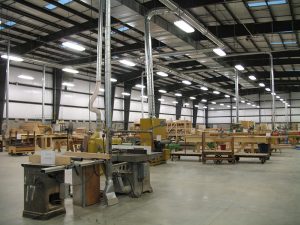At a recent presentation I was giving on green design and construction, one attendee was very concerned with my endorsement of the LEED green rating system. LEED is a third-party green certification for buildings that measures multiple aspects including energy efficiency, indoor air quality, and water conservation. It was his contention that LEED was flawed because you can get a point for bike racks and there is no requirement for energy efficiency. First off, this statement is entirely inaccurate. You have to design and build an energy-efficient building to achieve LEED Certification. You do however, also get points for encouraging the use of bikes, conserving water, and even using FSC wood. While there remain flaws with any points based system, the LEED system does in fact create buildings that are more energy-efficient than a code minimum building (the worst possible building you can build by law).

Yes, I have heard of the buildings that don’t perform as modeled in the LEED energy modeling softwares. The energy models used for LEED certification looks at the energy use in a perfect scenario, facility managers that know and understand how to run the system, and building occupants that use the building as is typical. The problem with many of the energy efficiency / water efficient strategies is that the enhanced comfort features are different. The facility managers need to be trained on how to operate the different systems. They are not necessarily more complicated, but simply are different. For instance, in a home with a continuous supply of hot water will save money on energy used to heat water – IF – you don’t use more water. The problem is that people often begin taking longer showers, as they now have a continuous supply of hot water.

We worked with Better Living Mill Shop to create their facility in Zion Crossroads. We did not design the building specifically for LEED Certification, but did achieve certification through our design decisions. We reduced energy use by more than 40% over a code minimum building. We reduced water use through capturing rainwater off the 24,000 sf room.We used a high level of recycled content material and local materials – because they were the appropriate materials for the project. We used common sense solutions to create the best value design for our client. LEED was simply a validation method that added value for the facility owner.
LEED is simply a tool to help measure your success against your goals for energy efficiency and environmental stewardship. If you use LEED as a mandate for green building, then you should also mandate specific points within the system that you feel are the most important. If bike racks are not important, don’t mandate that point. If energy efficiency is the goal, mandate a higher level of points for those specific strategies. We need to increase our goals for energy efficiency, if not for any other reason, then because we all deserve to save money through reduced energy use, water conservation, and using local materials.




